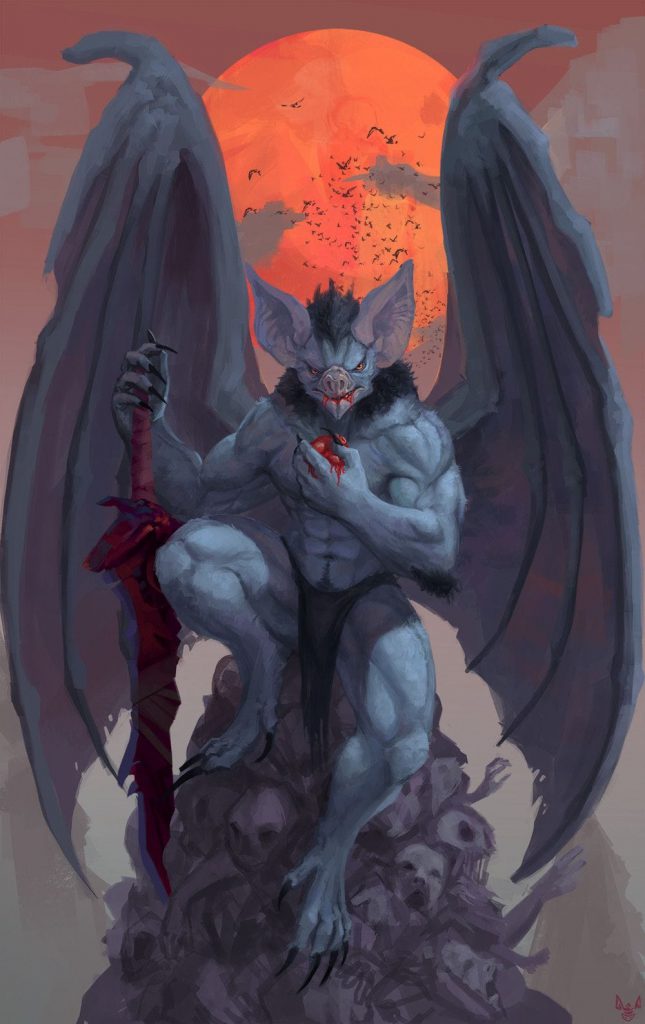Shapeshifting
The vampire may command several animal creatures such as the wolf, the rat, the fox, the owl, the bat and the moth and is also able to assume the form of a wolf or a bat and possibly any of the other animals subject to his command (spiders, weasels, cats, ravens, scorpions…) while retaining their own intelligence.
Some of the more powerful vampires or Vampire Regents are able to transform into a bat of human proportions.
The vampire may alter his size within certain limits, becoming either larger or smaller so that he can easily go out from his grave or coffin.

The vampire may climb walls much like a large insect. He may climb normally or with his head toward the ground much like a spider.
Vampires can often take away a person’s voice, strength, and beauty. This might be an imaginative extrapolation of the old Romanian belief that “live vampires” (*strigoi vii*) or persons born destined to become undead vampires (*strigoi morti*), developed the power while still alive to rob vitality or appearances from other living beings and to transfer them to another being, sometimes themselves.
Montague Summers also wrote in “The Vampire in Europe” that the Romanian vampire had the abilility.
“to gather the ‘power’ of beauty, which he sold for money, and here in fact we have the regular love charms. These female vampires are generally of a dry burning skin and a notably florid complexion. The men are bald and distinguished by peculiarly piercing eyes.”
The vampire may also transform himself into a mist or dust cloud drifting in the air through only the oldest and most powerful vampires or Vampire Regents are known to assume such forms.
The use of mist as a harbinger of evil in the vampire realm is quite common and has been effectively used in both literature and an abundance of films.
In Stoker’s Dracula, the doomed ship Demeter, carrying the vampire on-board, becomes awash with mist and Van Helsing himself asserts that: “He can come in mist which he creates, that noble ship’s captain proved him of this, but, from what we know, the distance he can make this mist is limited, and it can only be round himself.”
Later it’s Mina Murray who’s most plagued by the mist, whereby in Chapter Nineteen, while safely stowed in her quarters, she writes that during what she perceives to be a dream she notices a white mist creeping toward the house with “almost perceptible slowness,” a whirling mist that enters her room forming a cloudy pillar with lights that “seemed to shine on me through the fog like two red eyes.” For Mina, that would be the last time the fiend appeared to her by means of mist.
There’s no doubt that Stoker made great use of mist as well as elemental dust as two of Dracula’s powers. It is, and most likely shall remain, a permanent fixture in the horror genre, but Stoker wasn’t the originator of the vampire as mist.
Creatures of lore and legend were often tracked and identified by means of grave markers and any unusual characteristics of their final resting place. In some cases, the sign of a vampire would be suspected if small holes were noticed around her burial site, indicating that an evil creature had the means to possibly become mist and move freely in and out of her grave without disturbing it.
